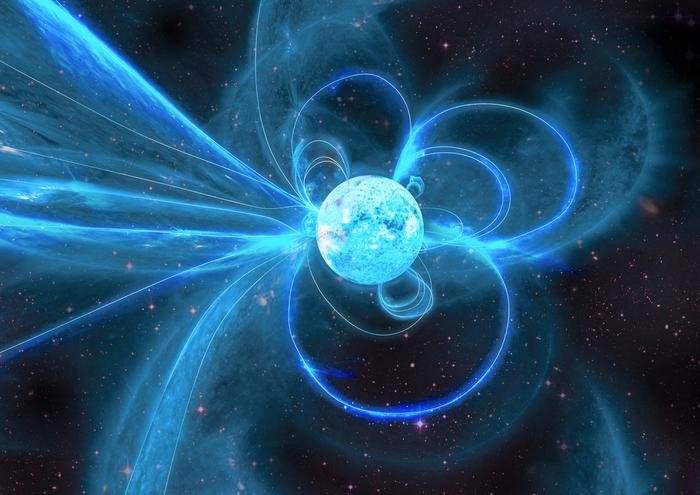Researchers using CSIRO’s Parkes radio telescope, known as Murriyang, have detected strange radio pulses from a previously inactive star with a strong magnetic field. The findings, published today in Nature Astronomy, reveal that the radio signals from magnetar XTE J1810-197 are behaving in complex and unprecedented ways.
Magnetars are a rare type of neutron star and are known to be the most powerful magnets in the Universe. XTE J1810-197, located approximately 8,000 light years away, is the closest known magnetar to Earth. While most magnetars emit polarised light, the light emitted by this particular magnetar is circularly polarised, meaning it appears to spiral as it travels through space.
Dr Marcus Lower, a postdoctoral fellow at CSIRO and lead author of the study, expressed his surprise at the findings, stating, “Unlike the radio signals we’ve seen from other magnetars, this one is emitting enormous amounts of rapidly changing circular polarisation. We had never seen anything like this before.”
Co-author Dr Manisha Caleb from the University of Sydney emphasized the importance of studying magnetars, as they provide valuable insights into the physics of intense magnetic fields and the unique environments they create. “The signals emitted from this magnetar imply that interactions at the surface of the star are more complex than previous theoretical explanations,” she said.
Detecting radio pulses from magnetars is an extremely rare occurrence, with XTE J1810-197 being one of only a handful known to produce them. While the exact reason for this magnetar’s unusual behavior remains uncertain, the research team has a hypothesis. “Our results suggest there is a superheated plasma above the magnetar’s magnetic pole, which is acting like a polarising filter,” Dr Lower explained. “How exactly the plasma is doing this is still to be determined.”
XTE J1810-197 was first observed emitting radio signals in 2003, but then went silent for over a decade. The signals were detected again in 2018 by the University of Manchester’s 76-m Lovell telescope at the Jodrell Bank Observatory, and have since been closely monitored by Murriyang.
The 64-m diameter telescope, located on Wiradjuri Country, is equipped with a state-of-the-art ultra-wide bandwidth receiver designed by CSIRO engineers who are world leaders in developing technologies for radio astronomy applications. This receiver allows for more precise measurements of celestial objects, especially magnetars, due to its high sensitivity to changes in brightness and polarisation across a wide range of radio frequencies.
Studies of magnetars like XTE J1810-197 provide valuable insights into a variety of extreme and unusual phenomena, such as plasma dynamics, bursts of X-rays and gamma-rays, and potentially even fast radio bursts. These findings contribute to our understanding of the complex and fascinating Universe we live in.
As scientists continue to investigate the mysterious radio signals from XTE J1810-197, they hope to unravel the secrets behind this magnetar’s unique behavior and shed light on the intricate processes taking place in these powerful cosmic magnets.
If our reporting has informed or inspired you, please consider making a donation. Every contribution, no matter the size, empowers us to continue delivering accurate, engaging, and trustworthy science and medical news. Independent journalism requires time, effort, and resources—your support ensures we can keep uncovering the stories that matter most to you.
Join us in making knowledge accessible and impactful. Thank you for standing with us!

